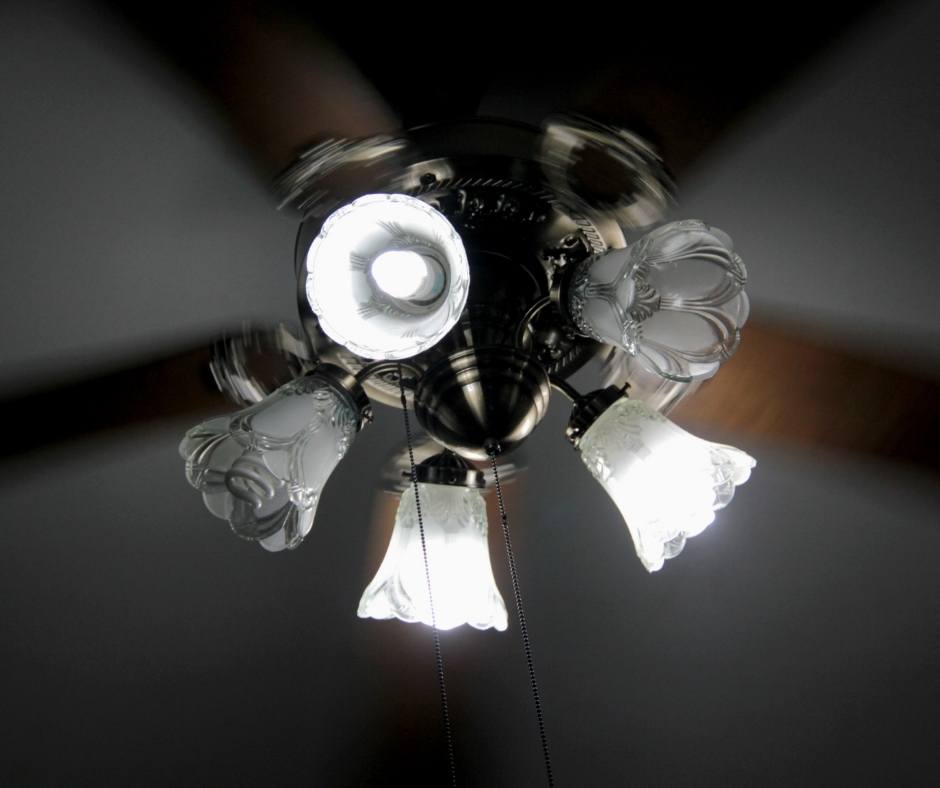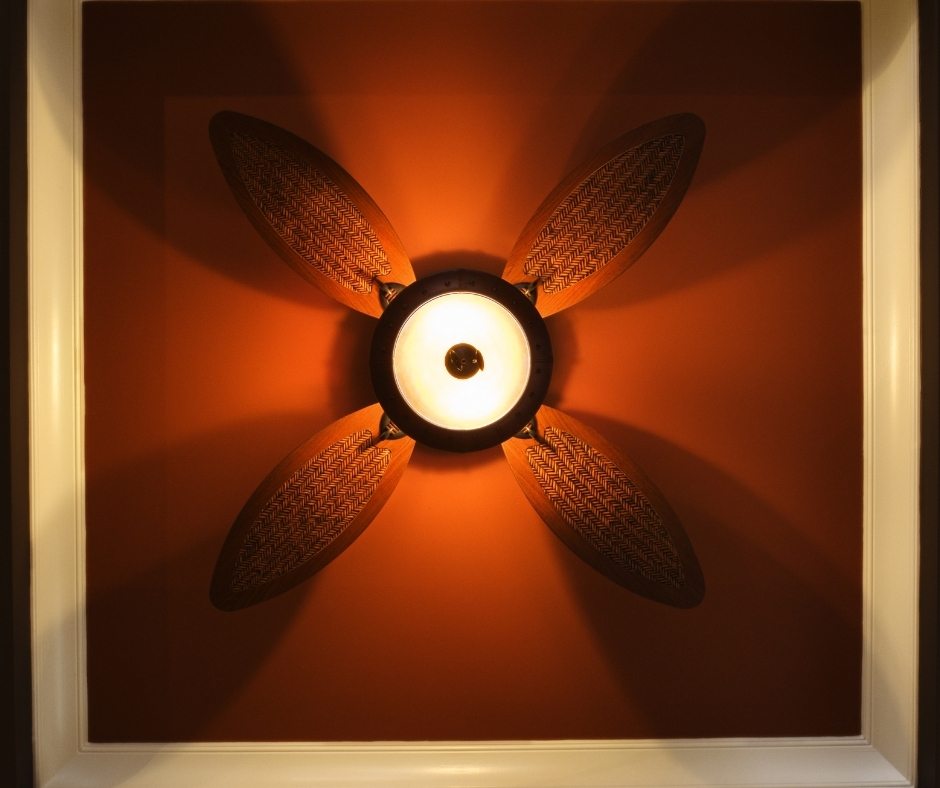Ceiling fans are an absolute must if you need to get the air in your home moving around. A great added feature is an embedded light, which can provide overhead light as the fan is circulating the air in your room.
All too often, however, that single bulb might cast too little light. That is especially the case in a large room. You can do some simple things to make that ceiling fan light brighter and give it the most oomph.
We took a look at several ways you can accomplish that, some with materials you probably have around your house. We put it all together in this article, which we hope you find to be of tremendous value.
Ways to Make a Ceiling Fan Light Brighter

There are a handful of ways to make your ceiling fan light brighter. Some of them have to do with things you do at the light fixture and some of them are things you can do in your room to make the most from what you have. We’ll call those environmental modifications.
Let’s take a look at some of the things you can do to the fixture.
- The first thing obviously is to boost the output from your bulb. Check your bulb’s lumen output and the maximum capacity for your fixture. You might find that the bulb you are using isn’t the most powerful one it can handle.
- One thing you’ll want to check is if the wattage of your bulbs is limited by the light itself. Some lights have little black boxes on them called wattage limiters. If yours has one, check to see if you can safely remove it. Then you can use a larger-wattage bulb.
- Speaking of the bulb, they come in different colors these days. So, look for a bulb that will cast a stronger light even if the output isn’t the strongest. You might need to match this with the existing color scheme in your room starting with the ceiling.
- If you’re using an old-style incandescent bulb, you can get more bang for your buck by swapping in an LED bulb. They usually have the same wattage as an incandescent bulb, but typically produce more light. They also last longer and will cut down on your electric bill.
- While you’re at it, look at the covering for the light fixture. Light fixture covers are designed to prevent raw, unfiltered light from bulbs from shining around the room. If yours is opaque, you might want to swap it out for something more transparent.
- your ceiling fan might be compatible with a different light fixture. Usually, all that’s required is some rewiring, which usually isn’t too hard. That is an option for you at the fixture level.
- You can find a new light that either can accommodate more powerful bulbs or that can handle LED bulbs. You can also find fixtures that can handle multiple bulbs. Multiple bulbs is a better option for larger rooms.
- If you have a light controlled by a remote, the fix might be really simple. You might have the settings at the dimmest. If you want more light, just adjust those. It sounds painfully simple, but frustrated people can overlook the simplest solutions.
- The most important of these will be the paint job, especially what you have on your ceiling. A paint job that complements your light is critical. The glossier the better, but you might not want to go for a full-on ceiling painted in glossy white. Check to see if a semi-glossy will work.
- There’s the top of the room, and there’s the bottom. A floor with lighter colors and is maybe a little bit shiny will help bounce light from your ceiling fan light around the room. Just remember that the light is bouncing directly off your floor.
- Your furnishings will help for the same reason. Light colors will cause light to bounce around whereas dark colors will absorb light. Furniture usually takes up a lot of space in a room, so use lighter colored furniture to work with ceiling paint and light-colored floor to keep as much of the light coming off the ceiling in play.
If you have a large room, this isn’t a fix-all. Light from the most powerful bulb you can use will still get lost in too big a space.
Before you do that, however, make sure that your fixture is compatible with an LED bulb. Some light fixtures can’t pair with LED bulbs, especially ones that use dimmer switches or remote controls.
Those are ways you can make your ceiling fan light brighter at the fixture point. As we said, there are limitations to making the light brighter at the fixture point, especially in a large room.
If that’s the case in your home, you can do a lot more good by making environmental changes. These are things that accentuate the light coming from the fixture and help carry it around the room.
That also goes for wall paint. Bright, cool colors can splash color around. If your room is too large, this might not work. But you can at least use paint that isn’t nearly as warm.
That’s not all. Sometimes it’s the little things. Like accessories.
We’re talking throw pillows, comforters in bedrooms, table coverings, the tables themselves, decorations, the whole nine yards. Got a comforter folded up over the back of your couch. Replace a dark one with a light-colored one and take a gander at what it does to your room.
Conclusion

While a ceiling fan light might not seem like an ideal way to illuminate a large room, there are a few handy tricks you can do so that it does a better job.
Some of them will require a little planning and investment, but some just require things you might already have laying around the house.
We hope you found this article helpful. If you did, or you have your own tips to add, we’d love for you to leave a comment down below. Feel free to share a link to it on your social media networks, too. Knowledge of handling life’s little problems is highly rewarding!

